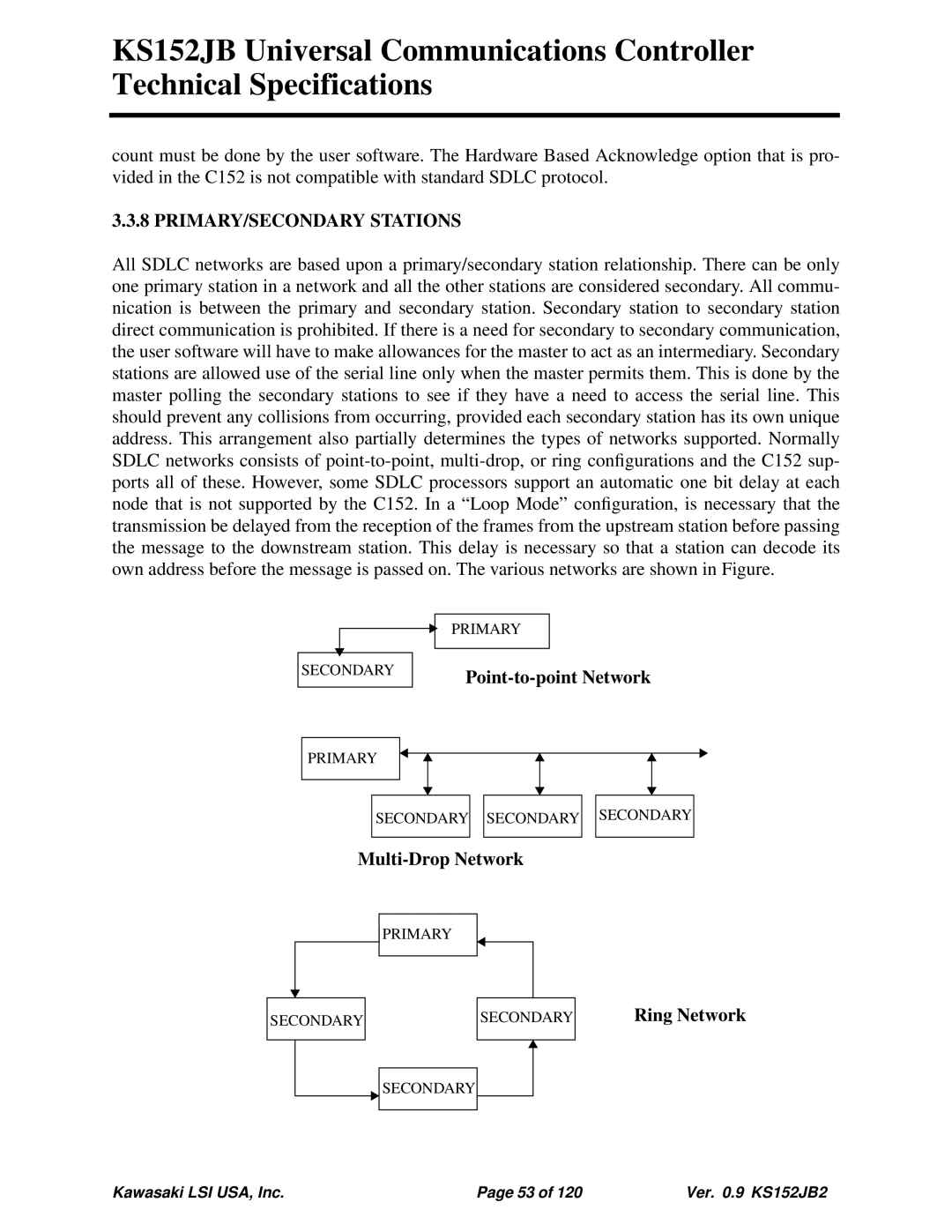
KS152JB Universal Communications Controller Technical Specifications
count must be done by the user software. The Hardware Based Acknowledge option that is pro- vided in the C152 is not compatible with standard SDLC protocol.
3.3.8 PRIMARY/SECONDARY STATIONS
All SDLC networks are based upon a primary/secondary station relationship. There can be only one primary station in a network and all the other stations are considered secondary. All commu- nication is between the primary and secondary station. Secondary station to secondary station direct communication is prohibited. If there is a need for secondary to secondary communication, the user software will have to make allowances for the master to act as an intermediary. Secondary stations are allowed use of the serial line only when the master permits them. This is done by the master polling the secondary stations to see if they have a need to access the serial line. This should prevent any collisions from occurring, provided each secondary station has its own unique address. This arrangement also partially determines the types of networks supported. Normally SDLC networks consists of
SECONDARY
PRIMARY
Point-to-point Network
PRIMARY
SECONDARY SECONDARY SECONDARY
Multi-Drop Network
PRIMARY
SECONDARY |
| SECONDARY | Ring Network | ||
|
|
|
|
|
|
|
|
|
|
| |
|
| SECONDARY |
|
|
|
Kawasaki LSI USA, Inc. | Page 53 of 120 | Ver. 0.9 KS152JB2 |
